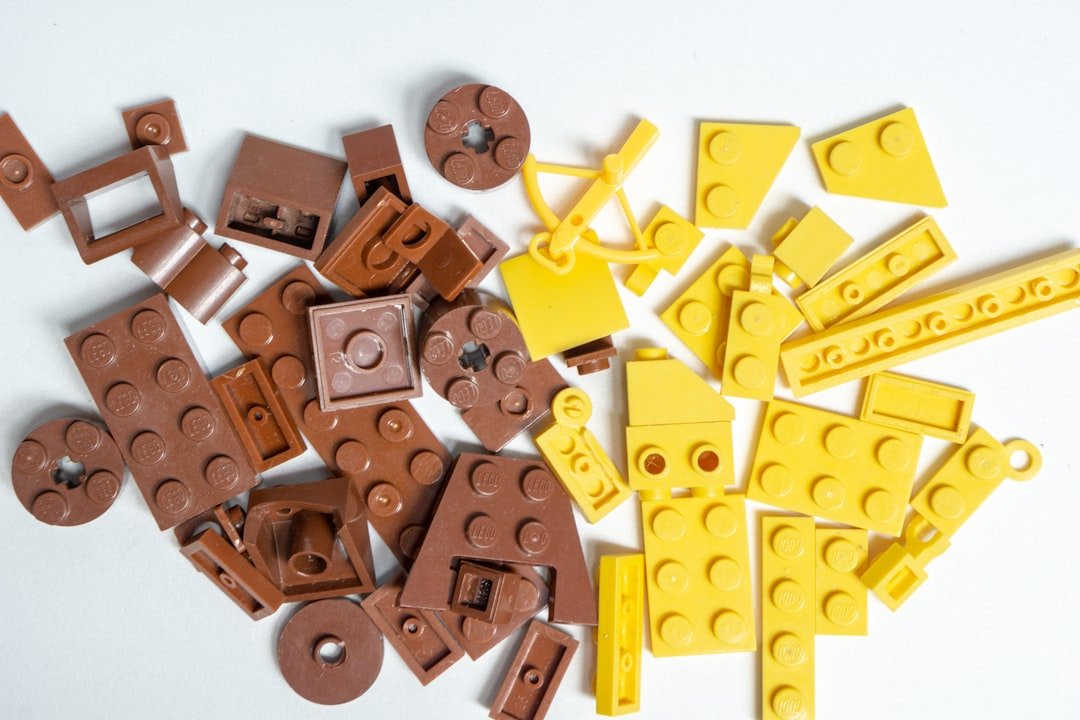Now Reading: Balancing Act: The Importance of Difficulty Sliders in Games
-
01
Balancing Act: The Importance of Difficulty Sliders in Games
Balancing Act: The Importance of Difficulty Sliders in Games

As a gamer, I have often found myself navigating the intricate landscape of difficulty sliders in various video games. These sliders serve as a crucial tool, allowing players to adjust the level of challenge they face. At their core, difficulty sliders are designed to cater to a wide range of player skills and preferences, enabling everyone from novices to seasoned veterans to enjoy the same game.
The concept is simple: by adjusting the slider, I can make enemies tougher, increase the frequency of resources, or even modify the game’s mechanics to suit my playstyle. This flexibility is not just a feature; it’s a lifeline that can transform a frustrating experience into an enjoyable one.
In some games, the adjustments are granular, allowing me to tweak specific aspects of gameplay, such as enemy AI or damage taken. In others, the options may be more binary, offering only a few preset levels of difficulty. Regardless of the approach, the underlying principle remains the same: to provide players with the ability to shape their gaming experience.
This customization is particularly important in an era where gaming audiences are more diverse than ever, encompassing individuals with varying levels of experience and skill.
Key Takeaways
- Difficulty sliders in games allow players to adjust the level of challenge to suit their individual preferences and skill levels.
- The impact of difficulty on player experience can greatly affect enjoyment, satisfaction, and overall engagement with the game.
- Customizing the gaming experience through difficulty sliders empowers players to tailor the game to their liking, leading to a more personalized and enjoyable experience.
- Balancing challenge and enjoyment is crucial in game design, as it ensures that players are both challenged and entertained without feeling frustrated or bored.
- Accessibility and inclusivity in gaming can be enhanced through the use of difficulty sliders, allowing a wider range of players to enjoy and engage with the game.
The Impact of Difficulty on Player Experience
The difficulty level of a game can profoundly influence my overall experience as a player. When I encounter a game that is too easy, I often find myself disengaged, as the lack of challenge can lead to boredom. Conversely, if a game is excessively difficult, it can result in frustration and even lead me to abandon it altogether.
Striking the right balance is essential for maintaining my interest and enjoyment. A well-calibrated difficulty level keeps me engaged, pushing me to improve my skills while still providing a sense of accomplishment. Moreover, the impact of difficulty extends beyond mere enjoyment; it can also affect my emotional connection to the game.
When I face challenges that require perseverance and strategy, I often feel a greater sense of satisfaction upon overcoming them. This emotional investment can lead to memorable gaming moments that resonate long after I’ve put down the controller. In contrast, if I feel overwhelmed by an insurmountable challenge, it can create a negative association with the game itself, diminishing my overall experience.
Customizing the Gaming Experience

One of the most appealing aspects of difficulty sliders is their ability to allow me to customize my gaming experience. Each player has unique preferences and skill levels, and being able to adjust the difficulty means I can tailor the game to fit my needs. For instance, if I’m in the mood for a more relaxed session, I can lower the difficulty to enjoy the story and exploration without the stress of constant failure.
On the other hand, when I’m feeling competitive and eager for a challenge, I can ramp up the difficulty to test my skills against tougher opponents. This customization not only enhances my enjoyment but also encourages me to engage with different aspects of the game. By adjusting the difficulty, I can explore various playstyles and strategies that I might not have considered otherwise.
For example, playing on a higher difficulty might force me to think more critically about resource management or character builds, enriching my overall understanding of the game mechanics. This flexibility fosters a deeper connection with the game world and its systems.
Balancing Challenge and Enjoyment
Finding the right balance between challenge and enjoyment is an art form in game design that resonates deeply with me as a player. A well-designed game should provide enough challenge to keep me engaged while ensuring that I don’t feel overwhelmed. This delicate equilibrium is often achieved through careful consideration of pacing and progression.
As I advance through a game, I appreciate when the difficulty gradually ramps up, allowing me to adapt and improve my skills without feeling like I’ve hit an insurmountable wall. Moreover, balancing challenge and enjoyment is not just about difficulty levels; it also involves understanding player motivation. Some players thrive on competition and seek out difficult challenges as a way to prove their skills, while others may prefer a more narrative-driven experience where they can immerse themselves in the story without constant setbacks.
By offering a range of difficulty options, developers can cater to these diverse motivations, ensuring that every player finds their sweet spot.
Accessibility and Inclusivity in Gaming
In recent years, there has been a growing awareness of accessibility and inclusivity in gaming, which has made difficulty sliders even more significant in my gaming experience. Many players face challenges that can hinder their ability to enjoy games fully—be it physical disabilities, cognitive differences, or simply varying levels of gaming experience. Difficulty sliders serve as an essential tool for making games more accessible by allowing players to adjust challenges according to their needs.
As I reflect on this aspect of gaming, I recognize how important it is for developers to consider inclusivity in their designs. Games that offer adjustable difficulty not only empower players with disabilities but also create an environment where everyone can participate and enjoy the experience together. This inclusivity fosters a sense of community among players, as we can share our experiences and strategies regardless of our individual skill levels.
The Role of Difficulty Sliders in Game Design

Difficulty sliders play a pivotal role in game design by providing developers with a framework for creating engaging experiences for diverse audiences. When designing a game, I appreciate how developers must consider various factors such as pacing, player motivation, and skill progression. Difficulty sliders allow them to implement these considerations effectively by offering multiple pathways for players to engage with the content.
Incorporating difficulty sliders into game design also encourages innovation. Developers are challenged to create mechanics that remain enjoyable across different skill levels while maintaining the integrity of the game’s core experience. This often leads to creative solutions that enhance gameplay for everyone involved.
As a player, I find it exciting when developers push boundaries and explore new ways to keep gameplay fresh and engaging through adjustable difficulty settings.
Empowering Players to Tailor Their Experience
One of the most empowering aspects of difficulty sliders is their ability to put control back into my hands as a player. Instead of being forced into a one-size-fits-all experience, I have the freedom to tailor my gameplay according to my preferences and skill level. This empowerment fosters a sense of ownership over my gaming journey; I am no longer just a passive participant but an active architect of my experience.
This sense of agency extends beyond mere gameplay mechanics; it also influences how I approach challenges within the game world. When I know that I can adjust the difficulty at any time, I feel more inclined to experiment with different strategies or take risks that I might otherwise avoid. This willingness to explore leads to richer experiences and deeper engagement with the game’s narrative and mechanics.
The Psychological Effects of Difficulty in Gaming
The psychological effects of difficulty in gaming are profound and multifaceted. As I navigate through various challenges within games, I often find myself experiencing a range of emotions—from frustration during tough battles to elation upon achieving victory. These emotional highs and lows are integral to my gaming experience and contribute significantly to my overall enjoyment.
Moreover, difficulty levels can influence my motivation and persistence as a player. When faced with challenging scenarios, I often feel compelled to improve my skills and overcome obstacles. This drive for mastery not only enhances my gaming experience but also translates into real-life benefits such as improved problem-solving skills and resilience in facing challenges outside of gaming.
Finding the Sweet Spot: Achieving the Right Balance
Achieving the right balance between challenge and enjoyment is an ongoing quest for both players and developers alike. As I engage with different games, I often find myself searching for that sweet spot where I feel challenged yet capable—a place where my skills are tested without leading to frustration or burnout. This balance is crucial for maintaining long-term engagement with a game.
Developers play an essential role in this process by carefully calibrating difficulty levels and providing feedback mechanisms that help guide players through their journey. When developers take into account player feedback regarding difficulty settings, they can refine their designs to create experiences that resonate with a broader audience.
Adapting to Individual Skill Levels
One of the most significant advantages of difficulty sliders is their ability to adapt to individual skill levels. As someone who has played games across various genres and styles, I appreciate how these sliders allow me to engage with content that matches my current abilities while still providing room for growth. Whether I’m playing a fast-paced shooter or an intricate puzzle game, being able to adjust the difficulty ensures that I’m always challenged without feeling overwhelmed.
This adaptability is particularly important in cooperative or multiplayer settings where players may have varying skill levels. Difficulty sliders enable teams to find common ground by allowing each member to adjust their experience according to their comfort level. This inclusivity fosters collaboration and camaraderie among players as we work together toward shared goals while respecting each other’s unique abilities.
The Future of Difficulty Sliders in Gaming
As gaming continues to evolve, so too does the role of difficulty sliders in shaping player experiences. With advancements in technology and an increasing focus on player-centric design, I anticipate that future games will offer even more sophisticated options for customizing difficulty levels. From AI-driven adjustments that respond dynamically to my performance to more nuanced settings that allow for fine-tuning specific aspects of gameplay, the possibilities are exciting.
Moreover, as discussions around accessibility and inclusivity gain momentum within the gaming community, I believe we will see an even greater emphasis on creating experiences that cater to diverse audiences through adjustable difficulty settings. The future holds promise for games that not only challenge us but also empower us as players—allowing us to shape our experiences in ways that resonate deeply with our individual preferences and abilities. In conclusion, difficulty sliders are more than just a feature; they represent a fundamental shift in how we approach gaming experiences.
By understanding their impact on player engagement and satisfaction, we can appreciate their role in fostering inclusivity and empowerment within the gaming community. As we look ahead, it’s clear that these tools will continue to evolve alongside our ever-changing landscape of gaming—ensuring that every player has the opportunity to find their perfect balance between challenge and enjoyment.
In a recent article discussing the importance of difficulty sliders in video games, it is interesting to consider the strategies employed by top-earning esports players. The article “Top Earning Esports Players and Their Winning Strategies” delves into the competitive world of professional gaming and how players adapt their gameplay to achieve success. Just as difficulty sliders allow players to customize their gaming experience, esports players must constantly adjust their strategies to outperform their opponents. This connection highlights the significance of player choice and adaptability in both casual and competitive gaming environments.
FAQs
What is a difficulty slider in video games?
A difficulty slider in video games is a feature that allows players to adjust the level of challenge in the game. This can include adjusting factors such as enemy strength, player health, and puzzle complexity.
Why do some players prefer games with difficulty sliders?
Some players prefer games with difficulty sliders because it allows them to tailor the game experience to their skill level and preferences. This can make the game more accessible to a wider range of players and provide a more enjoyable experience for those who may find the default difficulty level too easy or too challenging.
How do difficulty sliders benefit game developers?
Difficulty sliders can benefit game developers by increasing the accessibility of their games, potentially attracting a larger audience. It also allows developers to fine-tune the game’s difficulty without having to create multiple versions of the game, saving time and resources.
Are there any downsides to including difficulty sliders in games?
One potential downside of difficulty sliders is that it can be challenging for developers to balance the game’s design and narrative with the various difficulty levels. Additionally, some players may feel overwhelmed by the options and struggle to find the right balance for their skill level.
What are some examples of games that have successfully implemented difficulty sliders?
Games such as “The Witcher 3: Wild Hunt,” “The Elder Scrolls V: Skyrim,” and “Celeste” are examples of games that have successfully implemented difficulty sliders. These games allow players to adjust various aspects of the game’s challenge to suit their preferences.



























